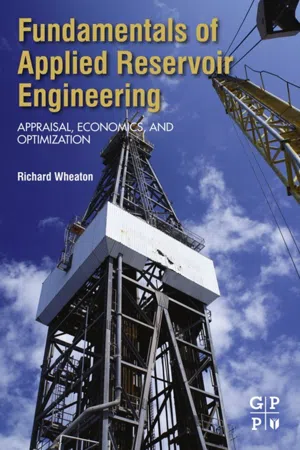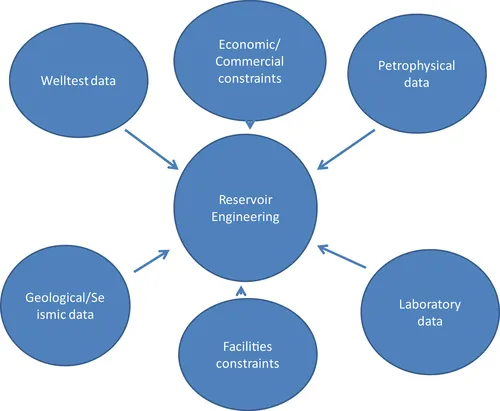
Fundamentals of Applied Reservoir Engineering
Appraisal, Economics and Optimization
- 248 pages
- English
- ePUB (mobile friendly)
- Available on iOS & Android
About this book
Fundamentals of Applied Reservoir Engineering introduces early career reservoir engineers and those in other oil and gas disciplines to the fundamentals of reservoir engineering. Given that modern reservoir engineering is largely centered on numerical computer simulation and that reservoir engineers in the industry will likely spend much of their professional career building and running such simulators, the book aims to encourage the use of simulated models in an appropriate way and exercising good engineering judgment to start the process for any field by using all available methods, both modern simulators and simple numerical models, to gain an understanding of the basic 'dynamics' of the reservoir –namely what are the major factors that will determine its performance. With the valuable addition of questions and exercises, including online spreadsheets to utilize day-to-day application and bring together the basics of reservoir engineering, coupled with petroleum economics and appraisal and development optimization, Fundamentals of Applied Reservoir Engineering will be an invaluable reference to the industry professional who wishes to understand how reservoirs fundamentally work and to how a reservoir engineer starts the performance process.- Covers reservoir appraisal, economics, development planning, and optimization to assist reservoir engineers in their decision-making.- Provides appendices on enhanced oil recovery, gas well testing, basic fluid thermodynamics, and mathematical operators to enhance comprehension of the book's main topics.- Offers online spreadsheets covering well test analysis, material balance, field aggregation and economic indicators to help today's engineer apply reservoir concepts to practical field data applications.- Includes coverage on unconventional resources and heavy oil making it relevant for today's worldwide reservoir activity.
Frequently asked questions
- Essential is ideal for learners and professionals who enjoy exploring a wide range of subjects. Access the Essential Library with 800,000+ trusted titles and best-sellers across business, personal growth, and the humanities. Includes unlimited reading time and Standard Read Aloud voice.
- Complete: Perfect for advanced learners and researchers needing full, unrestricted access. Unlock 1.4M+ books across hundreds of subjects, including academic and specialized titles. The Complete Plan also includes advanced features like Premium Read Aloud and Research Assistant.
Please note we cannot support devices running on iOS 13 and Android 7 or earlier. Learn more about using the app.
Information
Introduction
Abstract
Keywords
Central role of reservoir engineering; Combination of geological; Laboratory and field data; Petrophysical; Spreadsheet software available; Understanding petroleum economics
Basic Rock and Fluid Properties
Abstract
Table of contents
- Cover image
- Title page
- Table of Contents
- Copyright
- List of Figures
- Foreword
- Chapter 1. Introduction
- Chapter 2. Basic Rock and Fluid Properties
- Chapter 3. Well-Test Analysis
- Chapter 4. Analytical Methods for Prediction of Reservoir Performance
- Chapter 5. Numerical Simulation Methods for Predicting Reservoir Performance
- Chapter 6. Estimation of Reserves and Drive Mechanisms
- Chapter 7. Fundamentals of Petroleum Economics
- Chapter 8. Field Appraisal and Development Planning
- Chapter 9. Unconventional Resources
- Chapter 10. Producing Field Management
- Chapter 11. Uncertainty and the Right to Claim Reserves
- Appendix 1. Basic Fluid Thermodynamics
- Appendix 2. Mathematical Note
- Appendix 3. Gas Well Testing
- Appendix 4. Enhanced Oil Recovery
- Appendix 5. Simple Oil Material Balance for Rate as a Function of Time
- Appendix 6. Conversion Factors
- Appendix 7. Answers to Questions and Exercises
- Appendix 8. Nomenclature
- Appendix 9. Accompanying Spreadsheets
- Glossary
- Index